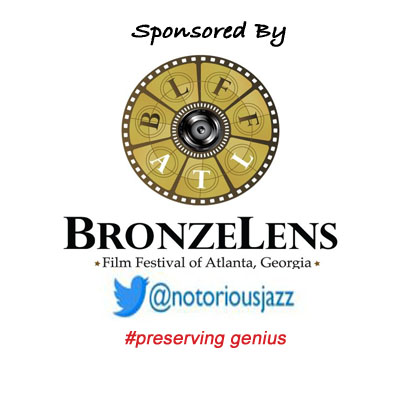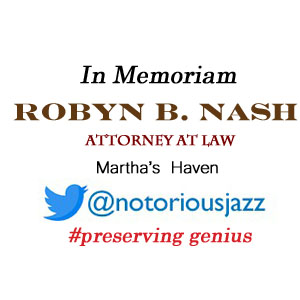
Daily Dose Of Jazz…
Denzil DaCosta Best was born April 27, 1917 in New York City, New York into a musical Caribbean family originally from Barbados. Trained on piano, trumpet, and bass, he concentrated on the drums starting in 1943. Between the years 1943 and 1946 he worked with Ben Webster, Coleman Hawkins, Illinois Jacquet and Chubby Jackson.
Known to sit in at Minton’s Playhouse, he took part in a recording with George Shearing in 1948 and was a founding member of his Quartet, remaining there until 1952. In 1949, he stepped out to play on a recording session with Lennie Tristano for Capitol Records and recorded later with Lee Konitz.
In 1953 a car accident fractured both legs and Best was forced into temporary retirement until 1954. His comeback had him playing with Artie Shaw, and then in a trio with Erroll Garner (1955–57), including Garner’s live album Concert by the Sea. He went on to play with Phineas Newborn, Nina Simone, Billie Holiday and Tyree Glenn. 1962 saw him in the drummer’s seat on Shiela Jordan’s first album Portrait of Sheila.
Best composed several bebop tunes, including Move, Wee, Nothing But D. Best, and Dee Dee’s Dance. With Thelonious Monk he composed Bemsha Swing and his composition 45 Degree Angle was recorded by Herbie Nichols and Mary Lou Williams.
Suffering from paralysis after the Jordan recording session, drummer, percussionist and composer Denzil Best, who was a prominent bebop drummer in the 1950s and early 1960s, transitioned after falling down a staircase in a New York City subway station at the age of 48 on May 24, 1965.
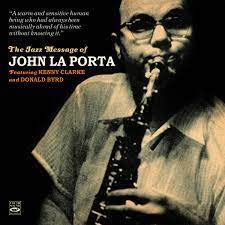
Daily Dose Of Jazz…
John Daniel LaPorta was born on April 13, 1920 in Philadelphia, Pennsylvania and started playing clarinet at the age of nine. He studied at the Mastbaum School in Philadelphia, alongside classmate Buddy DeFranco. As a teenager he played in local bands with Charlie Ventura and Bill Harris, and studied classically with Joseph Gigliotti of the Philadelphia Orchestra and Leon Russianoff at the Manhattan School of Music.
1942 saw him as a member of the Bob Chester big band for two years, then spent the following two years with the Woody Herman Orchestra. Beginning in 1947, he studied with Lennie Tristano, and with Teo Macero and Charles Mingus he was a member of the Jazz Composers Workshop, trying to combine jazz with classical music. Classically, he worked with Boston Pops, Leonard Bernstein, Leopold Stokowski, and Igor Stravinsky. In jazz he worked with Kenny Clarke, Miles Davis, Dizzy Gillespie, Charlie Parker, Buddy Rich, and Lester Young.
In 1956, La Porta played the first jazz concert in Venezuela at Caracas National Theater, where a selection of the repertoire performed was released under the title South American Brothers by Fantasy Records, becoming the first jazz recording in Venezuela.
As an educator he taught at Parkway Music School, then at public schools on Long Island, followed by the Manhattan School of Music and the Berklee College of Music. With guitarist Jack Petersen, he pioneered the use of Greek modes for teaching chord-scales.
In the 1990s, he retired to Sarasota, Florida, where he performed at the Sarasota Jazz Club and as a guest with the Fred Williams Trio. His autobiography is titled Playing It by Ear. Clarinetist and composer John LaPorta transitioned from complications of a stroke on May 12, 2004 in Sarasota.
More Posts: bandleader,clarinet,composer,history,instrumental,jazz,music

Daily Dose Of Jazz…
Tommy Chase was born on March 22, 1947 in Manchester, England and was largely self taught. He turned professional in the mid 1960s and after working in night clubs and on cruise liners settled in London, England in 1973.
Through the 1980s and ’90s he led his own straight ahead hard driving bebop groups with some success in the clubs and at the first Soho Jazz Festival. He used young musicians, notably sax player Alan Barnes, guitarist Dave Cliff and bassiat Andy Cleyndert. He recorded as a leader and as a collaborator with Ray Warleigh. He worked with Art Themen and Harry Becket as well as accompanying visiting Americans including Al Haig, Jon Eardley and Joe Albany.
A forceful drummer very much in the hard hitting style of Art Blakey, many musicians commented on his skill and timing. Quitting the music scene early in 1999, he played his final gig at the Jazz Cafe in Camden.
Drummer and bandleader Tommy Chase, recorded seven albums as a leader, transitioned on December 2, 2018.
More Posts: bandleader,drums,history,instrumental,jazz,music
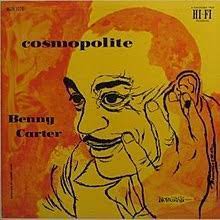
Daily Dose Of Jazz…
Jackie Mills was born on March 11, 1922 in New York City and he first learned guitar before picking up drums when he was ten years old. He played in the swing groups of Charlie Barnet and Boyd Raeburn in the 1940s. He followed with gigs with Jazz at the Philharmonic, Gene Norman, Babe Russin, Mannie Klein, Dizzy Gillespie, Benny Goodman, Rene Touzet, Sonny Criss, Andre Previn, Lionel Hampton, Stan Getz, Woody Herman, and Red Norvo.
In the late 1940s Jackie became interested in bebop and began playing in a style influenced by Max Roach. He began playing with Harry James in 1949, working with him through the late 1950s.
Mills recorded as a session musician during the 50s, working with artists such as Gerry Wiggins and Anita O’Day. In his later career, Mills recorded occasionally, including with Freddie Roach in 1966 and Dodo Marmarosa in 1978, but was chiefly active as a record producer and co-founder of Choreo Records, doing production work for Columbia, MGM, Mainstream, Capitol and Liberty Records.
In 1969, Mills acquired Larrabee Sound Studios from its co-founders Gerry Goffin and Carole King. As owner and operator through the mid-1980s, the studio was acquired by his son Kevin.
Drummer Jackie Mills transitioned on March 22, 2010 in Beaumont, California.
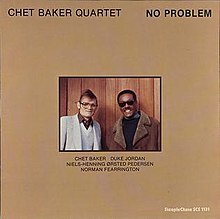
The Quarantined Jazz Voyager
My choice this week is the album No Problem by the Chet Baker Quartet featuring Duke Jordan. The album was produced by Nils Winther, recorded at Sweet Silence Studios, Copenhagen, Denmark on October 2, 1979 and released the following year on the Steeplechase label. The recording engineers were Freddy Hansson and Thomas Brekling, with Tom West holding down the assisting engineer role.
This session came during Baker’s resurgence from losing his embouchure from a beating that broke his tooth, more than likely related to an attempted drug buy, though the story is a bit hazy. After getting dentures he developed a new embouchure in the Seventies and began a more mellow and wavering playing style. There’s always his signature vocals present during this period in his career.
Track List | 51:19 All compositions by Duke Jordan- No Problem ~ 9:45
- Sultry Eve ~ 7:04
- Glad I Met Pat ~ 5:08
- Kiss of Spain ~ 7:15
- The Fuzz ~ 6:05
- My Queen Is Home to Stay ~ 7:13
- Jealous Blues ~ 8:48 (Bonus Track On CD)
- Chet Baker ~ trumpet
- Duke Jordan ~ piano
- Niels-Henning Ørsted Pedersen ~ bass
- Norman Fearrington ~ drums
More Posts: bandleader,history,instrumental,jazz,music,piano,trumpet


